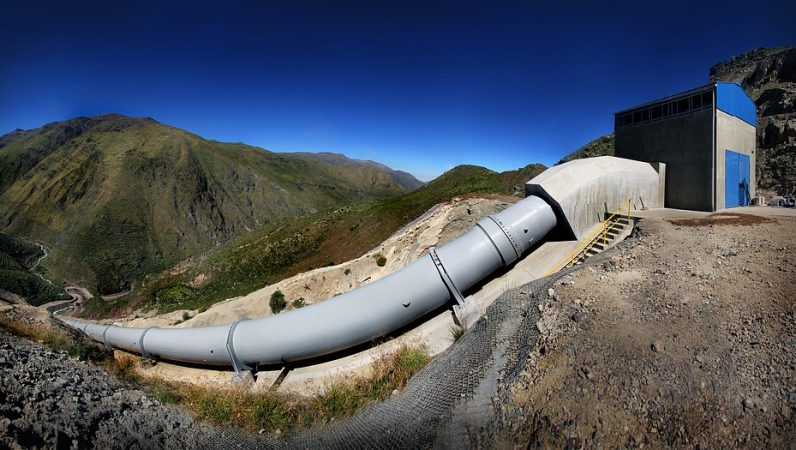Methane is one of the most dangerous man-made greenhouse gases and the second-largest produced gas after carbon dioxide. There are many sources of CH4 (methane), including landfills, heat waste, coal mines, etc. Gas distribution pipeline facilities carry methane and supply it to the consumers both commercial or household users. Today areas that come under Natural gas production are prone to side effects that are caused by gas leakage into the atmosphere. Formerly city gas distribution both local or cross country is bounded by the geographical and political conclave. Managing such a massive structure seems a tedious task that may require a wholesome of financial as well as humanitarian assistance. Methane gas leak risk at a given condition may result in heavy loss both to humans and the environment. On the other hand, it results in financial losses for the leading authorities who own the network. A gas detection system comes to rescue the leak caused by these gases. Today various unmanned areas have gas distribution pipelines and these pipelines are laid in remote locations remote areas where laying cable becomes impossible due to geopolitical as well as economic reasons.
Natural Gas Detection System in City Gas Distribution Network
Methane is the chief by-product of natural gas. The main causes of damage to the natural gas system are corrosion of steel pipes, structural issues damage, hosing and seal failure, wear and tear due to temperature change, stress, cracks, and holes appearing due to welding defects. In addition, the imperfections in anticorrosion coatings, imperfections in materials, and ground movements from landslides and landmine impacts can also damage pipelines. A methane gas detector can be used in these areas to make sure that even a minute leakage doesn’t move from its zone. In the mining area, the expansion joint of the steel pipe is also damaged by the displacement of the pipe segment and the deformation of the steel pipe and polyethylene pipe due to the deformation of the element. Therefore, it is very important to check the technical status on a regular basis. There are many technical methods for monitoring underground pipelines.
For example, geophysical methods, condition checks, leak detection, etc. for the location. various gas detection system techniques include the use of genomics that is sensitive to acoustic emissions caused by gas flows from damaged pipes. But a million-dollar question remains are acoustic methods that are worthy in the detection of a gas leak. Well, there are several cons that make them less efficient.
Here is a list of Issues that arise when acoustic techniques are used for gas detection:
- These techniques are Narrow to a confined temperature range
- Extremely small shelf life.
- More exposure to the target gas, lesser the life size of instrument.
- A fixed gas detector is used to control gas Leak issues in the toughest conditions no matter what temperature or weather condition or location.
Remote Gas Leak Detection Technique
Various techniques are used to detect gas leaks and identify pipeline leaks. Diverse external methods are also used for example human sensing or using trained dogs to sense the leak. No matter what human assistance is always required to check and keep an eye on the movement of gas. Sniffing the fumes of these gases may result in toxic consequences both for animals or humans. However, gas leakage Detection using Gas Detector so far appears to be one of the most effective techniques reason being the remote fixed wireless detector can be systematically adjusted at the nodes in the facility and requires no external energy resource to sense a gas leak.
Benefits of Infrared Methane Type Natural Gas Sensors
Today, methane infrared gas leak detectors used are listed on the top among other things that are used to detect natural gas leaks. Methane laser detectors can be mounted on a remote control flight platform to take measurements. Fixed gas detection system. Follow Best Practices to Prevent Gas Leakage using remote annotation for measurement of methane concentrations in the air is implemented and appears to be the safest and most effective of all. Further, it is the most economical method when it comes to gas detection systems because no extra bulky cables are required, no solar panel is required to establish the connection. Live Experiments in these studies mainly focused on man-made sources of methane used to simulate natural gas leaks from the pipelines are carried out on the physical sites. Technically advanced labs and calibration techniques are practiced to find out the exact performance of the gas leak detection equipment. Modern Gas Detector Manufactured at FirstSense Safety’s Lab is qualified to be used in tough conditions.
Gas Detection System By FirstSense Safety
The wireless gas leak detectors manufactured at FirstSense Safety are capable to deliver alert messages to up to sixteen mobile devices in real-time and no human assistance is required in such cases. Because of the practical techniques which balance with the test method in real-world conditions. Our work mainly consists of field tests in a small leak of pipeline just prior to repair. The gas leak has been detected in routine processes frequently used by natural gas distribution line owners. City gas distribution is a complex network it carries a lot of heavy pipelines that carry gas at extremely high pressure a small slit or welding gap may result in a gas leak. Gas Detectors are powerful Devices that Sense Gas leak and displays event update on user devices.

8 thoughts on “City Gas Distribution Pipeline: Use of Gas Detection System in Unmanned Areas”